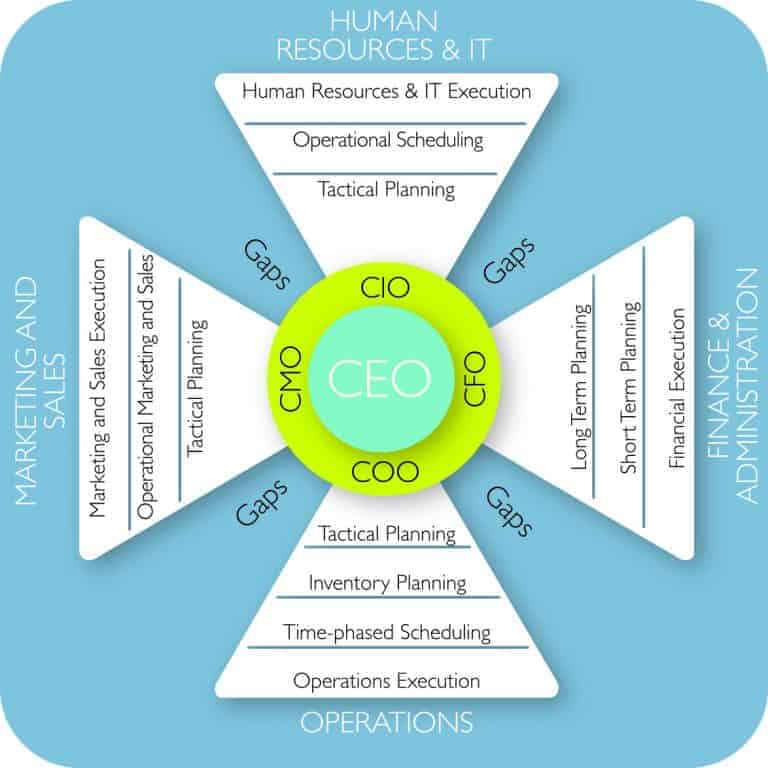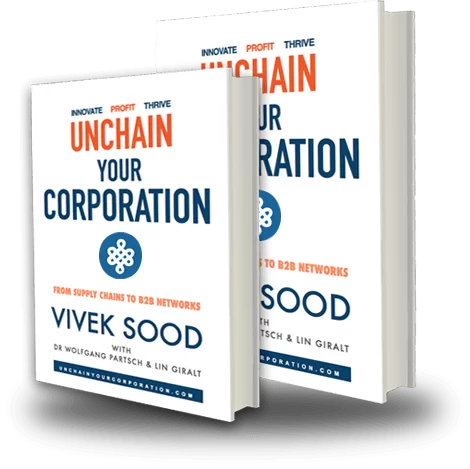HOW CAN YOU UNCHAIN YOUR CORPORATION?
Following is an excerpt from the book UNCHAIN YOUR CORPORATION that will help you along your journey. It is not an easy journey, but we have done it many times.
You may want to read the rest of the book before you embark on the journey.
STEP 1 - Understand Changes In The Environment
The first lesson is that you need to pick up the currents of change on your horizon.
Lots of companies do not maintain a strategic perspective to be able to detect the change of business model early enough, while the change is taking place.
Sometimes they do not notice the change even after the business model has totally transformed.
For instance, India did not notice the full extent of change that had happened within the world of hockey.
There are still teams in South America which have individual soccer wizards but simply fail to stand the onslaught of European winning machines who play like a network passing the ball to each other.
Moreover, businesses also need to notice the change well in time, to be able to do something positive about it.
Lots of companies, people, and administrators notice the change when it is too late to do anything about it. Indian hockey is a prime example.
By now it is well and truly registered in every Indian hockey player psyche why they have lost out on the global hockey front.
STEP 2 - Commit To Change
Indian hockey may from time to time, blame the lack of resources for their slide in international ranking.
Putting the blame’s justifiability aside, the point remains that you must make sure you have all the necessary resources and commitment for the big move.
Otherwise, not having enough resources, or thinking you do not need too much resources, will leave you in a state not much happier than the Indian hockey team today.
Apart from financial resources, you also need mental resources or the willpower to make that leap from the old model to the new one.
Coach Parreira more or less had to change people’s perception of success when he geared the Brazilian soccer team up for the 1994 World Cup.
Memories of decades of street soccer and individualistic style needed to go.
In other words, you need to stick to the transformation path till the end. There will be times when you will be tempted to revert, or take shortcuts because it is always easier to do things that come habitually.
But it cannot be emphasized enough that you have to keep sticking to it till the new model becomes the way of doing things, till the new way of playing soccer is the only way you play soccer.
STEP 3 - Update The Stories Or Legends
Legends and stories, of who you revere and why, are very powerful way of communicating what is important.
People are naturally wired to retell the legends, and to try and live up to them. They become the norm, or what is considered acceptable by the majority. The norm is driven or constructed by extraordinary people with inspiring stories over time.
Therefore, to encourage a change in habitual thinking that facilitates transformation, the stories or legends need to be changed in people’s mind.
A historical example that comes to mind is China’s socio-economic transformation led by Deng Xiaoping in the 80s.
Back then, Deng’s task was to change the stories that had been so ingrained in people’s minds during the years of China’s previous leader – Mao Zedong.
After proclaiming the founding of the People’s Republic of China (PRC) in 1949, Mao and other Communist leaders wanted to rebuild the country in the direction of the communism of which Marx had spoken, but at a faster rate and with a different flavor compared with the Soviet Union. Mao actively encouraged an abolition of differences between rich and poor, and divisions in labor.
The “Great Leap Forward” was a policy which Mao hoped would inspire everyone to become an economic and managerial expert.
Despite unsatisfactory outcomes, the policy succeeded in entrenching stories of collectivism and the importance of sharing resources.
People’s communes were the next level of collective farms, where there was not only mass mobilization of labor but also of living rituals.
Then came the Cultural Revolution as Mao attempted to re-assert his authority. At the time, Deng was still regarded by many as a “capitalist roader.”
To make it more difficult, there were protests by students in Beijing who upheld Maoist idealisms, denouncing “revisionists and capitalist roaders” in favor of rights for the poor.
When Deng became the de facto leader of China’s Communist Party, he started changing the psyche of people by using a different set of vocabulary.
“It matters not whether the cat is black or white, as long as it catches mice,” this is his famous saying which encapsulates Deng’s approach very well.
What this essentially meant was that practicality should come first. At that moment, the language of revolution really diverted from that during Mao’s time.
Stories abounded about how glorious it was to get rich. From pouring resources into a common hub, both collective farmers and individual growers were inspired to make as much profit as they could and to invest in any kind of local business.
In fact, one success story would inspire another one, and so on until China saw incomes increased significantly, stimulating industrial production along the way.
Farmers were more or less their own masters and investors, they were able to purchase their own machinery and fertilizer.
Meanwhile, in rural towns and in cities, “sidewalk entrepreneurs” started to appear. Everyone was pursuing their own wealth creation journey, regardless of what color the collar was.
To sum up, what businesses nowadays can learn from this is: to propel change, create, or change the tales of success that show the benefits of your desired transformation.
STEP 4- Separate The Man From His Method
Following from the story of China above, the next message to deliver is: no matter how much a man was honored for a method that worked well in the past, the point is to focus on what works now.
Mao Zedong is undoubtedly a much revered figure in China. If you look at the country’s currency note, you will see him. Nonetheless, people also know only too well that his collectivism-driven policies no longer apply to nation’s growth patterns.
Similarly, Pelé is still widely regarded as one of the best players in the world of all time. His signature style, moves and soccer philosophy are still looked up to by generations of soccer fans around the globe.
Yet, as much as Brazilian players want to emulate Pelé’s legacy, it has been proven that his method does not working anymore.
Likewise in business, a prominent figure may have laid an important foundation in the past, it will not be wise to stick to the person’s ideology when it no longer applies in today’s situation.
Change can only start when people make a distinction between honoring a man and critically review his method for improvement.
STEP 5 - Revisit the training
All that remains of Indian hockey is the “could-have-been” scenario.
They should have learned to play hockey on Astroturf, as a formation within a team which moves in a very fast and agile manner, passing a ball to each other to outwit the competing team as a network of players.
If Indian hockey wants to make that change, they will have to start from the root: teaching the new model to children who are just getting into the game using and bringing in coaches from overseas who are experienced in applying this model.
It is the only way they can catch up to the state of the art in modern hockey. The same thing applies to soccer in many South American teams such as Uruguay or Colombia, or even Mexico.
So if your business wishes to attempt a transformation, all those new employee orientation documents and on-boarding procedures need to change.
For existing employees, periodical training also needs to be modified. In a way, teaching existing people new things is even harder than training new people.
STEP 6- Change The Selection/Promotion
Closely related to the training of players is how they are selected in the first place.
Brazilian coaches essentially needed to look for stronger players who could play as a team, even if that meant overlooking individuals with brilliant dribbling techniques.
That does not mean individual sparks or talents would not be given the opportunity, but they may need to adapt if they want to be selected.
In the past, soccer players such as Pelé, rose to fame for their admirable individualistic and improvisational style.
Nowadays, the most celebrated ones are probably those who know how to play in formations, spearhead a network of strategic players while still retaining some individual brilliance.
For a business transformation, it is vital to bring on board those who not only are experts in their own functional areas, but also, and more importantly, effective team players.
A large part of the problem at hand in the corporate world nowadays is caused by the silo mentality. Thus, it makes no sense to take on employees who perpetuate this unhealthy schema.
The selection criteria need to change to accommodate business transformation.
In particular, more focus should be given to a person’s ability to coordinate with other departments, and other companies, in a pro-active manner.
Perhaps, the awareness of how one’s work affects others, as well as, the willingness to cooperate towards the same goal should be assessed carefully.
As an example, which is also mentioned towards the end of chapter 1, a COO found himself struggling to understand why he has been repeatedly overlooked for promotion, while he was a prime figure in the company and had worked his way up from a junior position.
No one could doubt his high caliber and depth of experience.
Yet he just lacked that one quality the Board has been looking for – the ability to weave teams of internal and external experts into a cohesive whole.
In other words, he still needs to work on how to get people to play in formations as in soccer, and understand the beauty of networks.
STEP 7 - Create The Right Rewards And Incentives
People are inherently motivated by rewards. In Skinner’s famous theories of operant conditioning, an association is made between a behavior and a consequence for that behavior, i.e. rewards or punishment.
If we apply the concept here, to get the desired actions of change, there should be links to appropriate incentives.
In soccer, for instance, instead of giving all the attention to individual brilliance, coaches, soccer associations and most of all, fans, should praise team efforts.
Individuals who are good team players should also receive credit. Apart from verbal reinforcement, financial rewards or advancement opportunities act as good incentives.
Likewise, in business, a range of incentives for desired behavior must be used.
From a pat on the shoulder by the manager, to being named “Employee of the month/quarter/year”, getting a pay rise, being put on an important committee, and being promoted, you can be creative with choosing rewards for different levels of actions too.
STEP 8 - Train, Train, Train In The New Method
There will be many instances of conflict during a transformation - whether a conflict of interest, a conflict of generation or a conflict of perception, which will be discussed later.
Change by its very nature is painful. Who can be sure that a brilliant soccer player who has been used to dribbling on his own will drop his ego and play as a team?
Who can be sure that tomorrow Indian hockey players will not give up on the new Astroturf surface which requires so much more sweat and stamina to stay on?
There will be resistance, and calls to resist. But it is vital to resist such resistance and resolve conflicts as they appear.
Every time you revert back to old way of functioning, all you are doing is prolonging the time it will take you to move on to the new one.
STEP 9 - Proximate Improvement
When it is hard to swallow a big chunk of meat in one go, what do you do? Of course, the answer is to slice it into smaller pieces.
If the transformation project seems too tall an order, and everyone seems to dread a disruption ahead, then proximate improvement should be applied.
The idea is to divide the journey towards transformation into small, achievable milestones.
Once a proximate achievement is reached, then comes the next one until we have the desired outcome.
For example, before being able to dominate the new hockey landscape, Indian hockey players need to firstly get used to running on Astroturf surfaces.
This first milestone could be determined by achieving a certain amount of physical training to build stamina.
Afterwards, they need to get used to controlling the ball with some more hours of practice.
Then, the next proximate achievement is when players have learned how to play in formations on the new surface. The list goes on.
Applying it to your business, improvements can be achieved on a department-by-department basis, or by working on one of the 5 components in chapter 6 at a time (i.e. Innovation, product phasing etc.), depending on your company’s appetite for change. Conflict resolution and peace is no piece of cake.
Business transformations are messy, and take immense levels of hard work. The nature of change will undoubtedly cascade into a battle between the pro-reform and the anti-change people.
Here I will list the most frequently encountered types of conflicts that can arise once a transformation directive is announced.
- Conflict of concepts (e.g. Agile vs. Green)
- Conflict of interests (between departments, and between companies)
- Conflict of perception
- Conflict of generations (Supply Chain 1.0 vs 2.0 vs 3.0)
While there is a large body of scholarship on organizational conflicts out there, I am going to focus on transformation-related conflicts under the lens of practicality.
Let us quickly unpack each of these in turn and tackle the ability to resolve them.
Conflict Of Concepts
In business, there are a large number of concepts, and there will be even more in the future.
Of course, not all concepts will be useful or relevant, but even that is a very subjective interpretation.
The fact that some people relate to certain concepts more than others, leading them to think these concepts must be right, can cause conflicts within an organization.
The first example that I would like to give you is the clash between those who uphold “Agile” as their motto, and those who want to go “Green.”
On one hand, there will be managers wanting to cut costs by using just in time inventory, which means the company having to organize daily truck deliveries to each of their stores.
The benefit is, of course, agility by responding to demand in an efficient manner. Nonetheless, this will cause some people on the other side to agonize.
They will vocally protest: “I am not even sure whether we’re saving any money here, but one thing is for sure is that we are increasingly our carbon footprint!”
Another example is the battle between proponents of “Direct shipment” and those of “Hub and spoke.” In a project for an explosives company in the US, we were faced with exactly this conflict of concept.
The company had 5 manufacturing plants around the country which catered to around 120 very big customers. A big question to answer at the time was which shipping method to use.
Just as soon as that was laid on the table, people started arguing their case vehemently.
“It’s cheaper to transport our products directly from here to here, why do we even bother shipping them to this hub?” Someone might ask.
Quickly and with much intensity, another person would shout: “Because we can combine many single trips and save some serious cash, can’t you see?”
The battle could have gone on forever if a fact based solution was not deployed.
Conflict of interests
In another project for a FMCG company (mentioned in chapter 7), who was looking to improve the poor utilization rate of their manufacturing plants.
I was admiring and shaking my head at the same time for the sheer complexity of their supply chain. The company had multiple plants around the world, each employing up to 3,000 people.
These plants were churning out as many as 10,000 products to customers in more 100 countries. The time came to decide which plant to close.
As you can imagine, there were massive conflicts of interests between different plant managers, who all held their factories as indipensable.
At some places, for the first time, workers and their managers seemed to be sympathetic with each other and became united for a single cause: making their case for the plant to stay.
Almost all business transformation involves difficult decisions with conflicts of interests.
In fact, one of the functions of the external consultants is not use objective and rational fact based approach that credibly settles these conflicts.
Of course it is critical to maintain objectivity and neutrality in such instances.
Conflict Of Perception
Closely related to the above conflict type, conflict of perception is more to do with the psychological factor and people’s judgments.
Specifically, this type of conflict arises because of our blind spots in perception. If you remember the tale of 5 blind men and an elephant, the lesson resonates well with our present discussion.
We often apply our subjective experience to confer the whole truth when it is usually the case that we have only touched upon a part of it.
Just like how one of the blind men claimed an elephant was like a pillar when he had only touched its leg; or another insisted it was like a husking basket when the ears were what he had felt.
In an organization, people coming from different backgrounds and experience will inevitably bring along a host of pre-conceived ways of doing things.
Regardless of whether their perceptions are “correct” (as in their relevance to the company’s situation), there will be people who zealously believe their perception should be the norm and try to put down others’.
That is where transformation experts come and help put together the totality of truth.
To give you a concrete example, I was working on a client project in South America, where we were trying to pinpoint the ideal location for a new manufacturing plant.
The common perception was that, it was always cheaper to transport raw materials than finished products.
With that in mind, many executives were pushing their agenda for a location which was not near the source of materials. But the tide had turned: the common perception had turned into nothing more than a fallacy.
It was no longer cheap to ship raw materials such as oil, gas or coal; while the freight cost of finished goods had gone down. In short, perception can be very subjective, transient and requires a clear mind to assess
Conflict Of Generations
The kind of generation gap I am specifically referring to is between different generations of Supply Chain.
This person is used to the structural, if not divisive way supply chain works, where there is no input from HR, finance or IT.
One day, thinking he must have done something right to be transferred to a bigger company for the same job title, he is shocked to find out a different truth.
It feels like everyone else is speaking a foreign language while he, despite his confidence and past success, attempts to explain his way of working to no avail.
In another situation, a high performing manager from a corporation at Supply Chain 3.0 level is seconded to aid transformation in a subsidiary, which has just climbed to the second generation of supply chain.
As a temporary CEO, she notices the intense cost focus of everyone to an extent, that innovation is stifled.
Even though people from different departments are contributing to supply chain operations, they are really just talking amongst themselves.
When she raises the suggestion of supplier collaboration, everyone seems unable to understand the need, or how to do it properly. Here she has to resort to micro-management, which lovers her own efficacy.
From these two scenarios, we can see that conflicts of generations can cause immense gaps in communication and understanding, further stifling collaboration.
Without a doubt, conflict resolution of any kind will require mental maturity, which means taking time off from ego trips.
Finding The Right People To Help You
Even when you may have all the other ingredients, not having the right people to help you build that transformation bridge can leave you stuck with the old model.
As long as the old model is the status quo, everybody in the system is inclined to walk within the boundaries. Disruptive thinking, therefore, tends to come from outside.
Experts who know and have experience of creating the new model are needed.
These people also need to do the hard part, which is standing up, challenging the old way and guiding people to the new way.
Even harder than teaching a child something new, this involves making people un-learn something they have incorporated into their lives for so long.
Hence, it is absolutely vital to find ways to correct people every time they fall back to the old habits.
For example, every time a player starts dribbling a ball with hockey stick, he has to be pulled back and taught to play in a strategic formation.
Undoubtedly, individual brilliance is still widely appreciated but without good team efforts, no single player can turn the tide. That is not to say there is no room for creativity in the new model.
As you can see, getting the right coach for a sport team or the people for a business transformation is paramount.
There may not be more than 50 people on earth in today’s business world who truly understand the new business model and know how to apply it to yours.
You have to get one of those people and get them to work very closely with you.
Another important thing is to support them every time a conflict between the old and new model arises.
These conflicts, whether of perceptions, of generations or of interests, may not be seen by insiders themselves.
Therefore, someone from the outside looking in and then getting in to help resolve conflicts is a crucial element.
Just like when climbing Mount Everest, having a guide, or a Sherpa, increases your success rate by 1.5 times, the right corporate Sherpa can increase your success rate significantly.
Would you risk getting lost in a blizzard, being hampered by heavy loads, having insufficient equipment or even falling off the edge, while there is a helping hand offered?
Now that we have all the ingredients, and steps, does that mean anyone who applies these will succeed? The obvious answer is no.
Because, in the end, it still depends on how well you execute the transformation.





